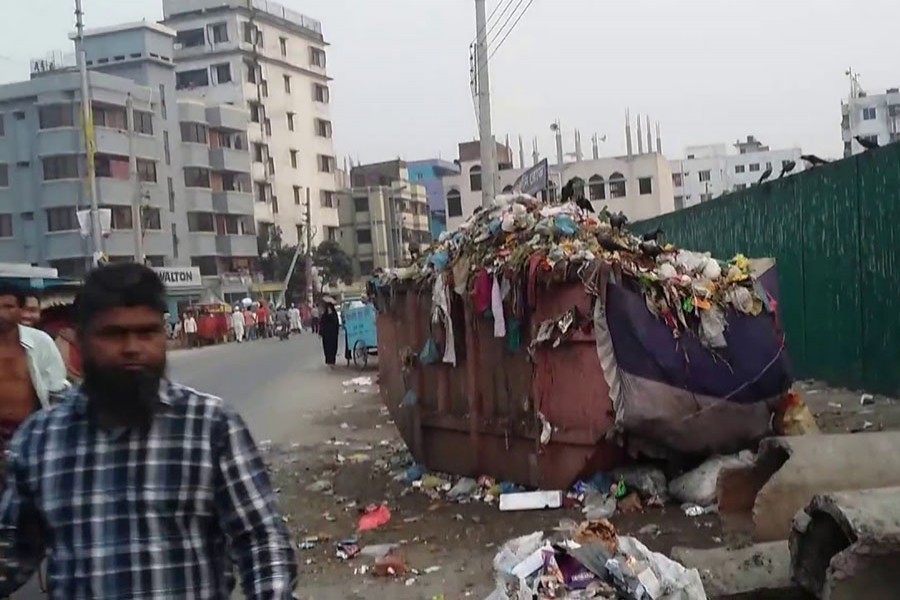
Published :
Updated :

There could hardly be a more apt caption of a picture of Hatir Jheel than the one carried in a Bangla contemporary-Dhaka's lungs have developed cancer. Metaphorically speaking, Hatirjheel could indeed be dubbed the city's lungs. It was perhaps at its most crystal clear when elephants from Peelkhana were regularly herded to the water body for bathing. Even in pre-liberation Bangladesh when the city was hardly crowded, the water mostly retained its original quality. But subsequently encroachment virtually reduced it into a drain. In fact, the storm sewerage that ran from Dhanmondi, Kalabagan and Shukrabad had its opening at the Banglamotor connecting point.
When the jheel was about to embrace a premature death, some well-meaning urban planners apparently succeeded in convincing the administration that restoring its health would in effect enable it to act as Dhaka's lungs. No other natural water body of this length meanders through the heart of the city. To the credit of the government, it not only committed to revive the jheel but also build some infrastructure adding to it a spectacular light show at night. The walkways and night show soon turned it into a recreational spot for city-dwellers.
However, the problem of waste and effluent dumping into the jheel was not solved. Its water never ceased to stink. For a brief period in the monsoon when water level goes up and rains neutralise some of its foul smells, the surrounding becomes somewhat tolerable. Considered dispassionately, therefore, the jheel could not take the role of the city's lungs -if ever it did, it was nothing more than congenitally cancerous.
What is surprising this time is that the authorities are turning a blind eye to this problem although newspapers, one after another, have been crying foul over it for long. Have the authorities given up on it, considering that it is beyond repair? The fact that residential sewerage connections open to the jheel has been brought to the authority's notice time and again. There was no remedy. In a similar case, the High Court has ordered sewerage openings to the Buriganga to be plugged. On Saturday, a contemporary reported non-compliance of the order in case of a large number of such connections.
Why are the authorities concerned indifferent in such cases? Can it be that there is no other alternative for them to divert the effluent? If it is so, they should take time for a long-term solution. But it is unwise to ignore the matter and leave it unattended. There is no temporary solution to such issues. In fact these will get further complicated with the urban concentration getting even thicker. No half-way-house measures will do and the cost is far more than it would have been if it was attended well in time.
The urban mess is getting messier because things were not comprehensively planned with an eye on the future need, say 50 or 100 years from the post-liberation development spree. Today the city has become unliveable not for nothing. Its physical infrastructure may still prove inadequate even after the construction of the elevated expressway and the metro rail. It is too crowded a city and its road space too insufficient for the huge population.
The few breathing spaces like the Hatirjheel have been polluted so heavily that people shy away from them for the obnoxious smell. Although waters of the two other lakes -one behind the Jatiya Sangsad and the other at Dhanmondi -may not stink atrociously but the water quality cannot be compared with that of similar facilities in Europe and America. So carefully are those picturesque water bodies maintained that one feel refreshing to breathe in the air. Even wild birds roam about leisurely without taking notice of the crowd there.
It is a pity that the inhabitants of this city proper could not create an environment where wilderness or water bodies lost none of their pristine qualities and characters to offer sanctuaries for birds and a rendezvous for human recreation.


 For all latest news, follow The Financial Express Google News channel.
For all latest news, follow The Financial Express Google News channel.